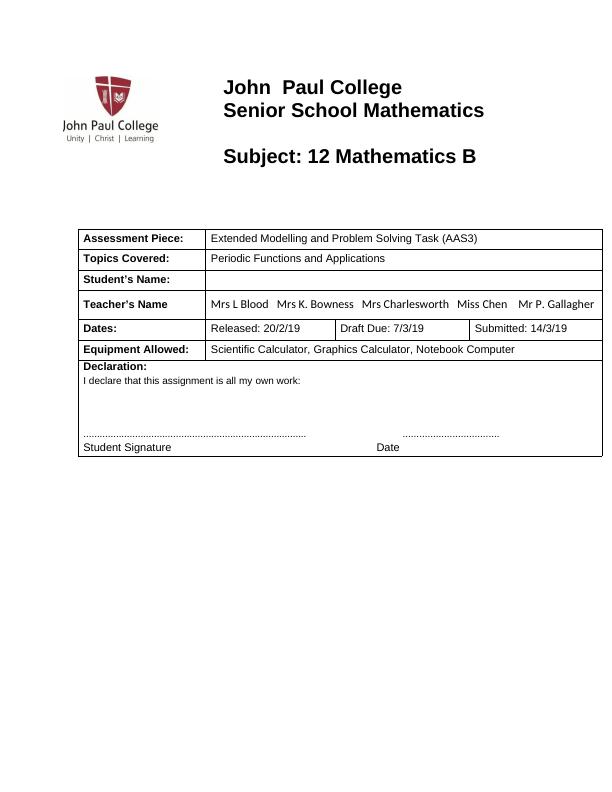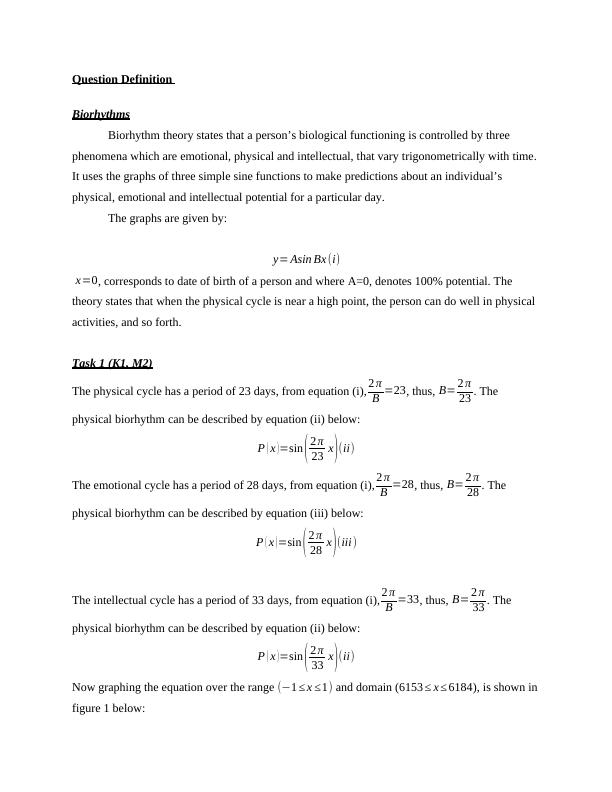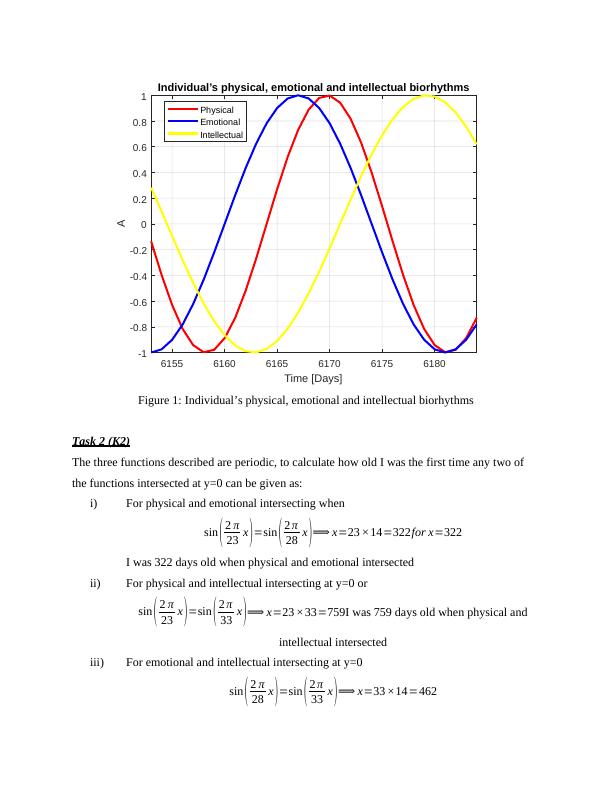Biorhythms and Luck Cycle: Extended Modelling and Problem Solving Task
This assignment is about extended modelling and problem solving in the subject of Mathematics.
8 Pages1650 Words231 Views
Added on 2023-04-23
About This Document
This task covers the topics of periodic functions and applications, physical, emotional and intellectual biorhythms, luck cycle, and assumptions of biorhythms. It includes tasks such as graphing equations, calculating intersections, and analyzing the luck cycle. The document is for Senior School Mathematics, 12 Mathematics B at John Paul College.
Biorhythms and Luck Cycle: Extended Modelling and Problem Solving Task
This assignment is about extended modelling and problem solving in the subject of Mathematics.
Added on 2023-04-23
ShareRelated Documents
End of preview
Want to access all the pages? Upload your documents or become a member.
Biorhythms: Theory and Controversy
|6
|842
|440
Math B Assignment
|13
|1376
|256
Biorhythm Theory and its Implementation in Industries
|7
|915
|212
Analytical and Computational Methods for Solving Problems with Sinusoidal Waves
|16
|1980
|88



